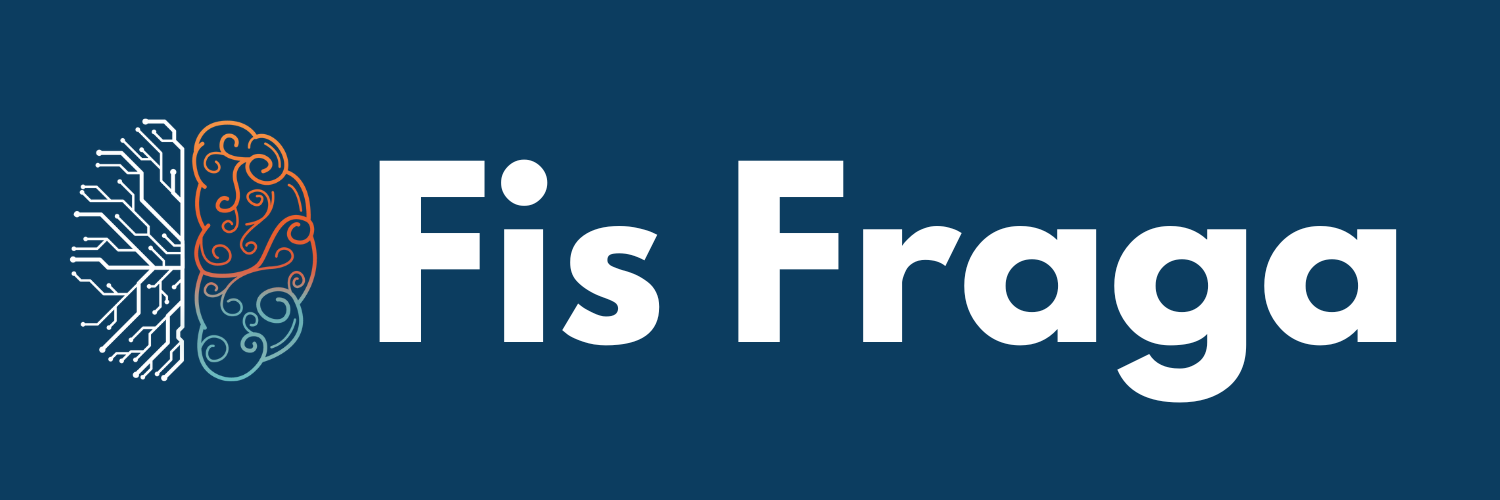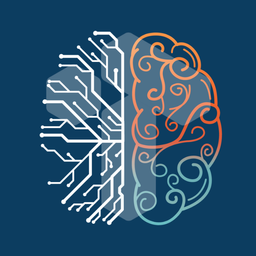no.17 - Systems Thinking applied in Tana. A Holistic Tool.
In Tana, Everything is Connected to Everything Else, it is a True System.

Everything in life is connected.
Let's break down the protocols and start with a quote. ↓
(Don't worry, you'll still get 4 more.)
“In nature everything is connected, everything is interwoven, everything changes with everything, everything merges from one into another.”
– Gotthold Ephraim Lessing
I'm a firm believer that everything is indeed connected.
- My Second Brain is not a dead machine, with isolated parts.
- My Second Brain is a living system, it's like Nature, connected.
It's very simple:
If a note-taking app does not allow you to represent connections, you'll never be able to easily navigate through your Second Brain.
Everything becomes isolated.
Just like the current situation with computer folders (🤢).
Without connections, you might as well just use pen and paper, because at least you get the benefits of a more sensory experience.
I'm all about connections and thinking in systems.
And Tana does a fantastic job at this.
Actually, the magic of Tana comes from many powerful features connected to one another.
- Capture Inbox.
- AI Commands to manipulate data.
- Supertag Structure.
- Fields to connect Supertags.
Let's dive into some of them. ↓
💬 Quotes
Quote 1
“At the forefront of contemporary science, we no longer see the universe as a machine composed of elementary building blocks.
We have discovered that the material world, ultimately, is a network of inseparable patterns of relationships; that the planet as a whole is a living, self-regulating system.”
– Firtjof Capra, physicist, UC Berkeley
Society has always tried to understand things by breaking them down into parts, or building blocks.
A perfect example is the atom.
Atom means indivisible.
Physicists at the time were looking for the building blocks (parts) that form matter.
This is the paradigm of mechanism.
When you model everything as a machine, you identify component parts and study them separately.
Mechanism:
- Break things down into parts.
- Study parts in isolation.
- Study the characteristics of each part.
The other side of the equation is the paradigm of holism (systems thinking).
That's when you study patterns and relationships.
How things relate is more important than what they're made of.
Holism:
- Break things into patterns.
- Study relationships.
- Study how parts fit into the larger system.
When talking about apps, here is my take:
Folders represent mechanisms, breaking everything down into parts, and studying them in isolation.
Networks represent holism, study relationships, and how things relate.
Tana is a holistic tool.
Everything can be connected!
Quote 2
“A system is an interconnected set of elements that is coherently organized in a way that achieves something.
If you look at that definition for a minute, you can see that a system must consist of three kinds of things: interconnections, elements, and a function or purpose.”
– Donella H. Meadows, author of Thinking in Systems
With system thinking defined, we can now define a system.
A system is more than the sum of its parts.
Parts are the elements.
But a system has more than elements.
A system also has interconnections and a purpose.
This is a missing piece for many people:
- What you have in your Second Brain is just one part of the process.
- How information flows from one place to another is another huge part.
- Why you're even doing this is even more important.
Quote 3
“The more complex the network, the more complex its pattern of interconnections, the more resilient it will be.” – Fritjof Capra
Tana is built to deal with complexity.
The data structure (described in this article) makes it possible to create highly complex connections and integrations that simplify your life.
That's because a complex system is more resilient.
A simple system needs complex interactions.
A complex system works with simple interactions.
You can interact in a simpler way using systems that handle complexity.
Automations, integrations, and back-end processing make it easy for information to flow in a simple way through your system.
Complex structures lead to simple interactions.
Tana is built to deal with complexity.
So you can focus on what matters.
Quote 4
“The least obvious part of the system, its function or purpose, is often the most crucial determinant of the system’s behavior.” – Donella H. Meadows
We've mentioned this in Quote 2, but now let's expand on it because it's a very important aspect:
- Start with why.
The purpose of a system is the most crucial aspect.
And the purpose of your Second Brain is unique to you.
This means your entire Second Brain system should be based on something only you can determine: your purpose.
Each person will have a different purpose for their system.
A flexible tool becomes essential.
A tool that can accommodate different workflows for different purposes.
Tana excels in this aspect.
You create your own structure, with custom supertags, and fields.
For example, I like to collect and organize quotes:

📄 Notes
Note 1. Fields in Tana Create Relationships
Systems Thinking is focused on relationships.
Non-surprisingly, relationships are a central aspect of Tana.
In Tana, relationships are represented by fields.
Fields of a Supertag represent relationships with other Supertags.
It's quite simple actually.
How to configure any field to represent a relationship:
- Set DataType = Instance
- And choose what Supertag the instance belongs to ↓

Fields can create connections between 2 supertags.
In the example below, each field creates a relationship between the "quote” supertag and the respective supertags they are associated with:

It's worth noting that fields can be used in different supertags.
This means a field creates a relationship FROM multiple different supertags TO the specific supertag they are associated with.

Another interesting aspect of Tana is that relationships can propagate across supertags.
You guessed it…
Using fields!
If you create a new instance of a child supertag inside an instance of a parent supertag, the new instance can inherit past relationships from the parent supertag.
Here is a simple example of how the "month plan" and the "week plan" inherit the "Year" Field from the "quarter plan”:

Relationships are a core piece of Systems Thinking.
And relationships in Tana are incredibly powerful!
Note 2. Emergence in a Second Brain
Emergence is a critical aspect of Systems Thinking.
Emergence is the idea that larger things emerge from smaller parts: it's the natural outcome of things coming together.
In other words:
- “The whole is greater than the sum of its parts"
But HOW is the whole greater?
In a complex system with many parts, something happens.
Things emerge in between the parts:
- Relationships emerge
- Feedback emerges
- Patterns emerge
It's that idea: Systems Thinking is focused on studying relationships, not the parts.
I have an example to illustrate how emergence works.
How the whole is greater than the sum of parts:
This example is one of the most important relationships that emerge in a Second Brain:
The Relationship between Projects and Notes:
Notes are component parts of a system.
But when you use notes to work on a project, the notes are being used for a specific outcome (a purpose).
This means that in the context of working on this project:
- The note is worth more than an isolated note.
The relationship between the Note and the Project is an added value to the isolated worth of the note and the project.
Note + Project + Note-Project relation > Note + Project
The idea behind this is the following
- IF The Whole = Only Structural parts
- THEN, emergence is something that wasn’t in the parts but appears in the whole, due to the relationships between parts.
This is what I'm striving for in my Tana Second Brain App.
Note 3. Feedback Loops in Tana
Another very important aspect of Systems Thinking is Feedback Loops.
There are 2 types of feedback loops:
- Balancing Loops
- Amplifying Loops
Balancing loops are about equilibrium.
Amplifying loops are about exponential growth.
Here is how Tana allows for these 2 types of feedback loops:
Reinforcing loops
Reinforcing loops in a Second Brain is about:
- Reaching Critical Mass of Notes
A Critical mass of notes is a superpower.
When you can use your Second Brain to find knowledge about anything.
The more notes you have, the more notes you can surface to work on a new project.
The more material you have at your disposal.
All note-taking apps benefit from the reinforcing loop.
Tana just makes it a breeze to find notes because of custom types and structured relationships.
Balancing Feedback Loops
Tana allows you to build a dedicated space for feedback (review) in the supertag's structure.
Yes, this depends on you.
But just the fact that Tana allows this is fascinating.
The idea here is to have a place for deliberate feedback.
Balancing feedback is aimed at eliminating causes of negative effects, and promoting causes of positive ones.
The focus is to reflect, redirect and improve with each iteration.
Here's how I would build a Review component in Tana:

Simple as that.
It's just a placeholder for the review, which gives me a visual cue to perform the monthly review.
You just need to decide what to review, put it into the “month review", and voilà.
Another example would be a project review.
- How many times have you reviewed a project?
- Would you benefit from it?
- Would a review be more probable if present in the project's structure?
🔗 Further Watching
Fluminense and Dinizismo
OK, this is not very related to Tana.
But it is a real-world application of systems thinking.
I am a Fluminense 🇭🇺 supporter, and in 2023 we won the Copa Libertadores.
This video explains the phenomenon behind our success:
- The Dinizismo
Fernando Diniz is Fluminense's coach, and he has a pretty weird style of play.
The Dinizismo is a unique and apparently chaotic way of playing. It's structureless and formless, focused on possession, crowded spaces, and creativity.
A unique aspect of how Fluminense plays is relationism.
Relationships between players are more important than where they are in space.
Does this remind you of anything? 🤔 💭
You can understand it better with the video.
Thank you for reading!
Fis Fraga, M.Sc. is a Tana Ambassador and digital writer. He helps people develop a productive and fulfilling life using a mix of Knowledge Management, and Artificial Intelligence.
You can read more at:



